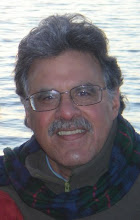Answer:
Horner's Corner is located 6 miles east of the town of Truckee via interstate #80. One first passes the "West Bridge" and after a 1/4 mile one crosses the "East Bridge", This area is known as "The Loop".
The big pool at the apex of "The Loop" (below the dripping/water stained sandstone cliff) is named after Jack Horner who originated the Deer Hair Horner fly ...alternately known as the Goofus Bug or the Humpy.






